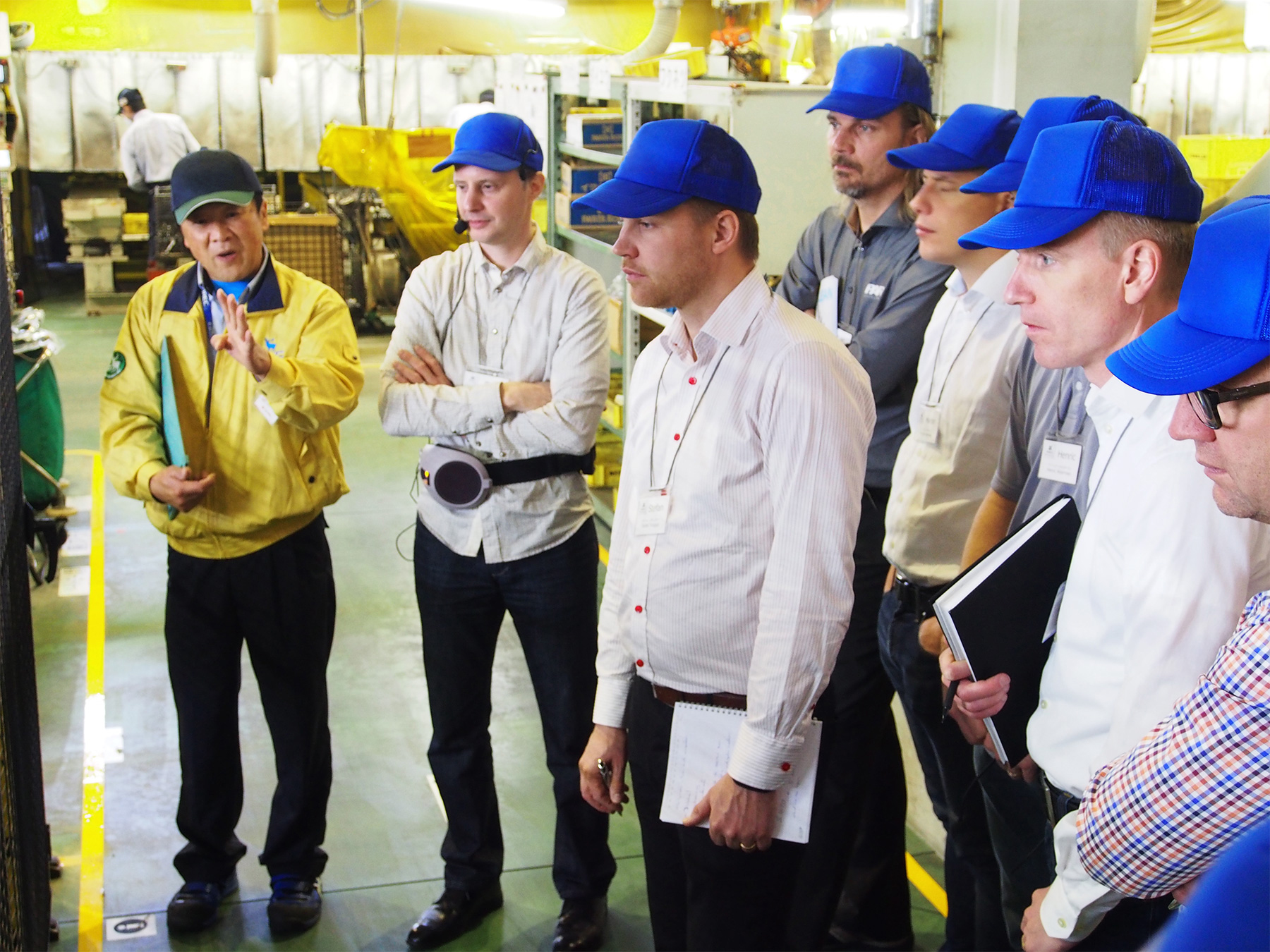Shift your focus in quiet times

It proves easy to keep productivity at its peak for businesses with a high volume of orders, regardless of whether in manufacturing or service-based industries. The demand just keeps coming, it’s pushing through. However, it’s very different and rare for a manager in a situation with low volumes, to still have high productivity numbers.
Recognise the opportunity in quiet times
The typical response of most managers in times of low volume is to reduce their labour and increase the lead time through the factory of an item. More often than not, this comes down to the layout of the factory or the process followed to create the service. Subsequently, problems surface when volumes are down, and every dollar counts.
Low volume is, in fact, the perfect opportunity to identify and fix those problems- not just reduce labour. Let’s look at how we can take advantage of the opportunity.
Picture this: your value stream and cash flow is a river
There are rocks in the riverbed. When the water levels are high, and the water is flowing fast- we have a high volume of orders and productivity. In this picture we’re happy and we don’t see the rocks. However, when the volume of orders reduces, you can imagine the water levels come right down.
The rocks become exposed. It’s no longer easy sailing down the river that you had when the water was high. The rocks are becoming a hazard, they’re getting in the way and you now have the potential to crash your boat. This picture presents challenges to your business.
The rocks in your riverbed might seem minor; perhaps you can steer around them. But in fact, they are problems that need to be identified and fixed.

Addressing the wastes in our process means we get better and better at one-piece flow, better at short lead times and better at quality; we are no longer hindered by the rocks- the challenges of low volume- in our business.
Our river’s water levels will remain high and our business continues to move forward, even when demand is low. Takehiko Harada defines this concept as Shojinka Lines- “Productivity keeping lines, even with a low (fluctuating) volume.”
Time to upskill
In addition to the opportunity to identify and reduce waste during times of low volume, your people have the opportunity to upskill and cross-train. Get them training over several processes. This is a benefit to your business as you now have an opportunity to improve people’s skills- one person can now fill in for several others. So if you don’t have the volume of people there that you would normally have during high production, you will have a multi-talented person who can move through the process and follow that work through to completion if needed. This creates significant advantages in terms of speed, lead time and quality.
Ready to respond
Management needs to be ready when volumes are down. Ready to recognise low volumes as an opportunity to create improvements. Normally we do things like let people take time off, make production early and shut it down for the day. This feels good!
But it’s not a point at which to have a bit of breathing space and relax- it’s an opportunity to remove the hazard of the rocks in your business’ riverbed. What we should be thinking about is how we can eliminate the waste out of the process.
Instead of reducing our people onsite- bringing our head count down or reducing working hours, top management can enable the training of people on multiple tasks and the following through of a job. This approach further assists in the identification of many more problems.
It’s important we collect the extra people that we’re not using when volumes are down. We look at where the value flows, ie the money, what our suppliers and contractors are doing for us, which projects we can improve, what we can do to improve, and what we can do differently. For example- is there a process we can stop outsourcing and start to do in-house?
By taking this approach, those extra people aren’t extra people anymore- they’re actually delivering value for money. We want people to be working on value-added processes, ensuring the identification of and addressing these opportunities will deliver value for the company.
Additionally, it’s a chance to stop and make those software changes, tools or simple pieces of equipment we’ve been thinking about. Or it could be a great time to automate processes.
In a manufacturing environment, it can be as simple and effective as making jigs and equipment. In a service-based environment, the low volume could provide people with the time out to build a really excellent spreadsheet or database that helps to automate a whole bunch of processes.
It could generate the opportunity to implement a simple piece of software that makes life easy for everybody when volumes rise again.
Engage your people
There are huge benefits to engaging the non-recoverable people in the business who aren’t doing actual value-adding work in these improvement projects on the business. When volumes are back up, and they’re working back in their usual roles, they will have an appreciation for the improvements done.
When we have a downturn in demand, we need to place a high value on the potential for our people to gain this experience. It’s an opportunity to grow people.
Reductions in demand are actually opportunities for improvement. It’s a big call because a lot of manufacturing businesses will be compelled to say “Okay, so we’ve got no work on people- take some leave.” For businesses operating in a service-based environment, where it’s harder to see the tangible things, quite often the low volumes are not realised until the month is over.
At this point, it becomes apparent the volumes have been terrible and they’ve still spent all this overhead on people. Management must have a close eye on volume, so they can identify the occasions that present as problems- those kinds of little disasters- and turn them into opportunities.
An opportunity missed
Years ago I saw a classic example of management missing the opportunity to use a time of low volume to their advantage on a mine site. In this scenario the site didn’t have its own independent power supply- it was actually connected to the state power supply and drew an awful lot of power.
One day they had a lightning strike that hit the only transformer on-site and took out the power for the whole site. The impact onsite that week was catastrophic to volumes – production stopped. There wasn’t a generator big enough to run the plant, so the only option was to fix the transformer.
They essentially shut down the processing plant and spent the entire time without power just scrambling around trying to find a new transformer. Management failed to identify the opportunity for improvement.
Granted, they did some maintenance, but essentially they just stood around and kicked the tires, so to speak. No real Kaizen activity took place during a fortnight of lost productivity.
We can help you to shift your focus and recognise these occasions of low volume that might be perceived as disasters, however they present themselves, as the opportunities for development and growth within your business that they really are.
Reach out if you want to know more about how to create a culture of continuous environment in your workplace.
or
Check out our Capability Training options.
or
Book a discussion to find out how we can help your business.
Respect,
Daniel.
Subscribe for updates
We provide free updates and advice regularly to help you improve your business and leadership skills, and for exclusive content there is a paid subscription too!
Follow us on YouTube
Our YouTube channel is a must for Leaders in business who want to empower their teams and improve their processes. You'll find plenty of our current thinking there
Build your Capability with our Members Program

We do consulting differently, in that we believe in building your capability to improve - we want to provide you with the secrets to success, not keep it all to ourselves! Our exclusive Member Program coaches you to be a great Leader, to empower your people to drive improvement, and identify large gains in employee engagement, quality and performance.
Talk to a consultant
We love to have a chat. We also like to make sure we have time just for you. You can book a chat and we can discuss your continuous improvement journey. We are happy to provide as much obligation-free advice as we can during the call, including what would be the recommended next steps for you to take.

